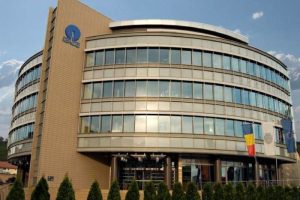Alătură-te comunității noastre!
Vezi cele mai recente știri & informații din piața de capital

Mercedes-Benz Group AG achieved strong second-quarter financial results, thanks to sustained demand for luxury vehicles and premium vans, a good model mix and enhanced pricing power.
As a result, the adjusted Return on Sales at Mercedes-Benz Cars rose to 14.2% in the quarter and reached 10.1% at Mercedes-Benz Vans, despite the COVID lockdowns, the ongoing semiconductor supply-chain bottlenecks and war in Ukraine.
Group revenue rose by 7% to €36.4 billion (Q2 2021: €34.1 billion) and adjusted EBIT increased by 8% to €4.9 billion (Q2 2021: €4.6 billion) as the company’s focus on Top-End Luxury vehicles, battery electric vehicles (BEV) and premium vans as well as a relentless focus on costs, helped to offset lower sales and higher raw material costs.
In the wake of heightened geopolitical tensions following Russia’s attack on Ukraine, Mercedes-Benz has sought to safeguard supply chains and to maximise the potential for reducing or substituting the use of natural gas in vehicle production.
For example, Mercedes-Benz has established that in Sindelfingen, where the EQS, S-Class and Mercedes-Maybach are produced, the paint shop could operate without gas supply in an emergency mode.
Mercedes-Benz sees a gas reduction potential of around 50% in Germany without impact if regional pooling is possible. The company’s long-term goal is to switch from gas to electricity and other renewable energy sources.
In addition to making Mercedes-Benz more weatherproof against geopolitical and macroeconomic headwinds, the company continues to transform at full speed towards an all-electric future.
For example: in June, the Mercedes-Benz VISION EQXX beat its own efficiency record and drove more than 1,200 kilometres on a single charge under real-world conditions.
The EQS SUV was presented and the EQE was launched in the market. And that’s after Mercedes-Benz, in consultation with its employee representatives, recalibrated its European production network for passenger cars to manufacture its reshaped product portfolio focused on luxury electric vehicles.
Investments, free cash flow, liquidity
The free cash flow of the industrial business in the second quarter amounted to €1.4 billion (Q2 2021: €2.2 billion), as semiconductor bottlenecks and supply-chain disruptions led to a build-up of unfinished stock.
The adjusted free cash flow of the industrial business was €2.1 billion (Q2 2021: €2.5 billion). The net liquidity of the industrial business as of June 30 amounted to €19.1 billion (end of 2021: €21.0 billion).
The Group’s investments into property, plant and equipment amounted to €0.8 billion in the second quarter of 2022 (Q2 2021: €1.0 billion). Mercedes-Benz Cars invested €0.7 billion in property, plant and equipment (Q2 2021: €0.9 billion) and Mercedes-Benz Vans invested €0.03 billion (Q2 2021: €0.03 billion).
At group level, research and development expenditure in the second quarter amounted to €2.2 billion (Q2 2021: €2.4 billion).









Vezi cele mai recente știri & informații din piața de capital